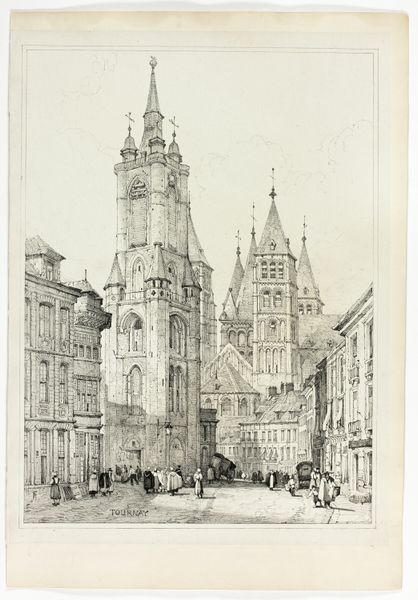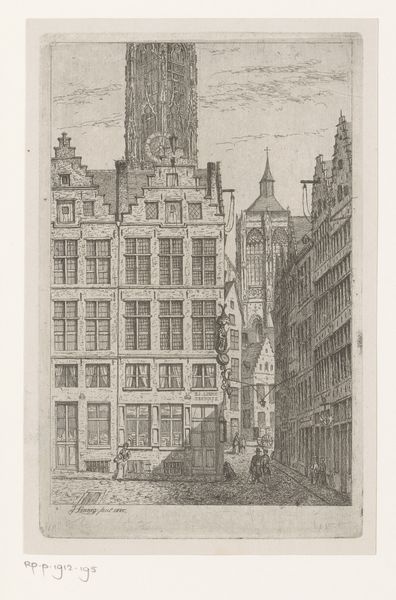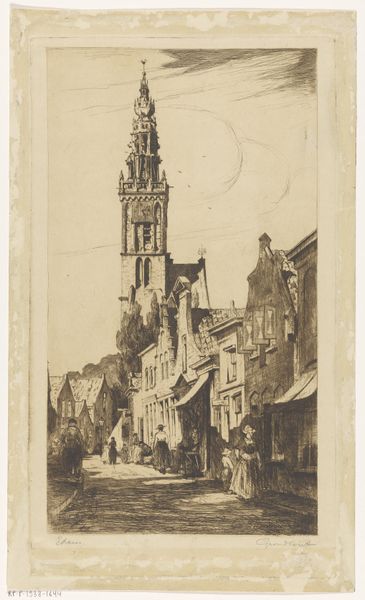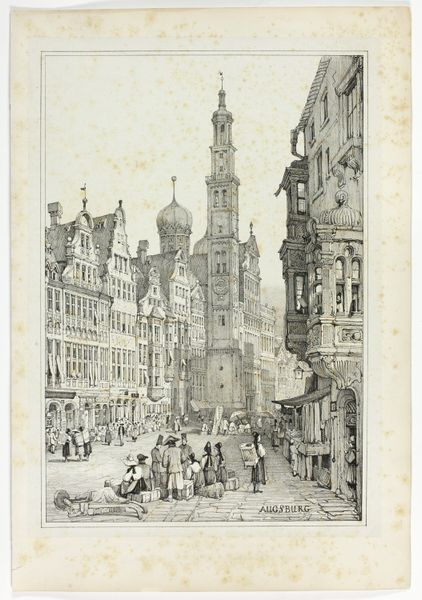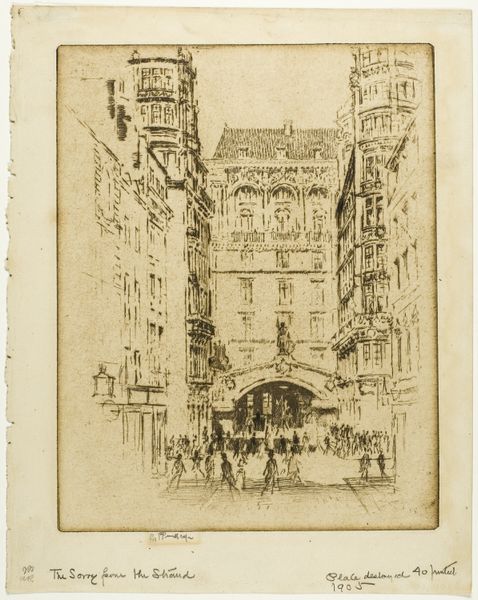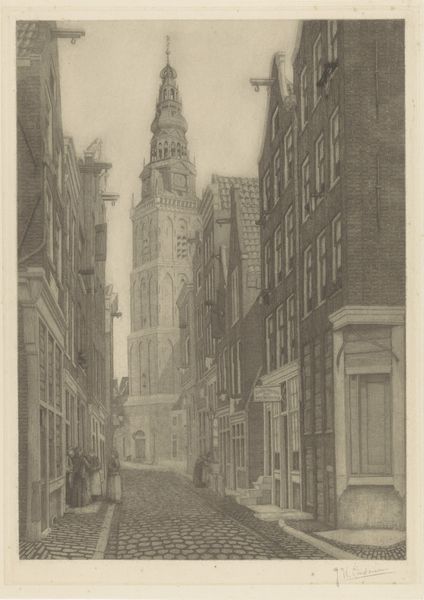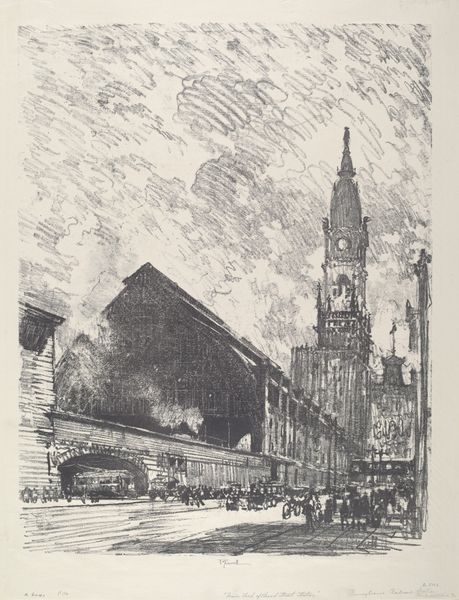
drawing, print, etching, architecture
#
drawing
# print
#
etching
#
landscape
#
etching
#
cityscape
#
architecture
#
realism
Dimensions: height 365 mm, width 224 mm
Copyright: Rijks Museum: Open Domain
Editor: This etching, titled "Haarlem" by Willem Adrianus Grondhout, likely created between 1888 and 1931, presents a detailed cityscape. The neutral tones create a rather serene mood, despite the busy architectural details. What catches your eye, what's your interpretation of this cityscape? Curator: I'm drawn to how the artist situates the Grote Kerk, or St. Bavo Church, not just as a landmark, but as a dominant structure shaping daily life. Consider how religious institutions, historically and even now, influence public spaces and individual movement. The figures almost seem to orbit around the church. What power structures are at play here, visible and invisible? Editor: That's a fascinating way to see it. I was focused on the technique, the detailed etching of the architecture, but the human figures do seem almost secondary to the church's imposing presence. Curator: Exactly. The etching, while celebrating the city's architecture, subtly points to questions of power, faith, and the individual's place within larger social systems. Notice how the crisp architectural details contrast with the less defined human figures; it’s not just about realistic rendering; it suggests their relative importance within the scene. Who has the power to define and shape our lived environments, and how are individuals either included or excluded from these narratives? What message do you believe the artist tries to pass? Editor: So, you're saying the artist isn't just presenting a pretty picture of Haarlem, but perhaps a commentary on societal power structures embedded within the city's landscape? It reframes how I see these older cityscapes. Curator: Precisely! Art allows us to delve into complex social dynamics. It’s a glimpse into the values and hierarchies that shaped these spaces, challenging us to think about our own roles in maintaining or reshaping them today. Editor: I will definitely keep that in mind going forward; it helps contextualize and appreciate works like this one from a fresh perspective. Curator: Agreed, let's carry forward an activism in engaging with the artwork presented before us.
Comments
No comments
Be the first to comment and join the conversation on the ultimate creative platform.


